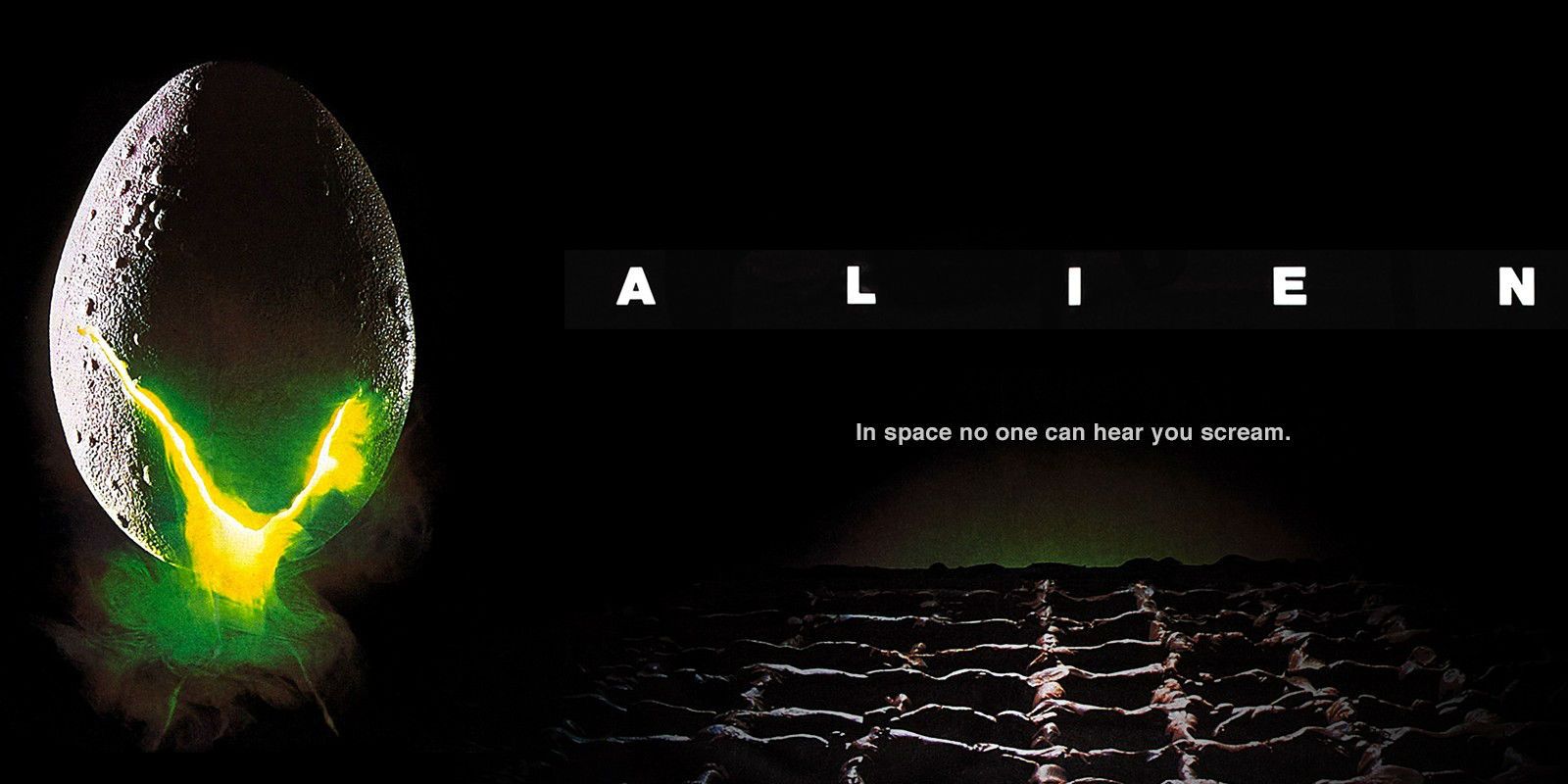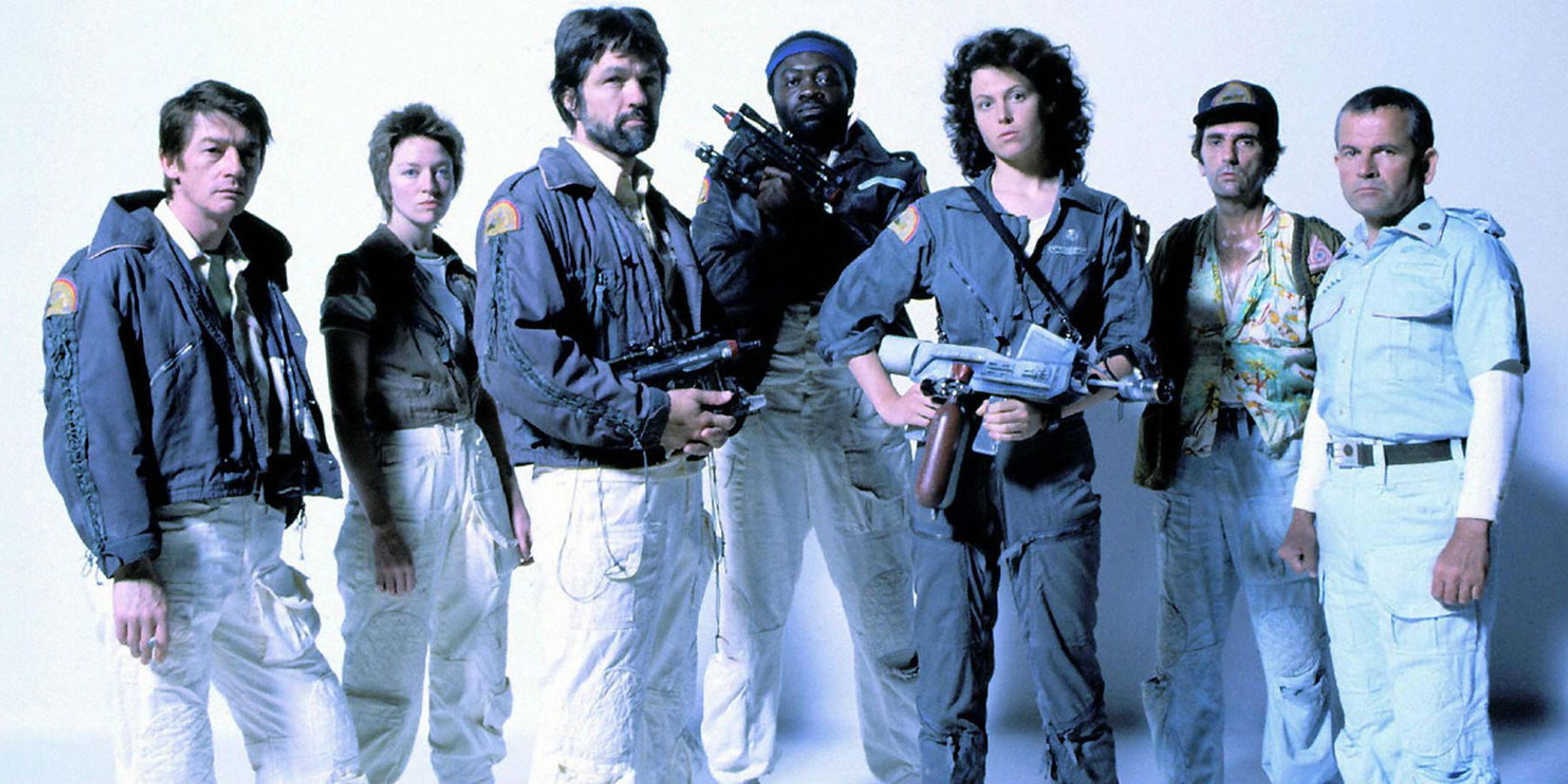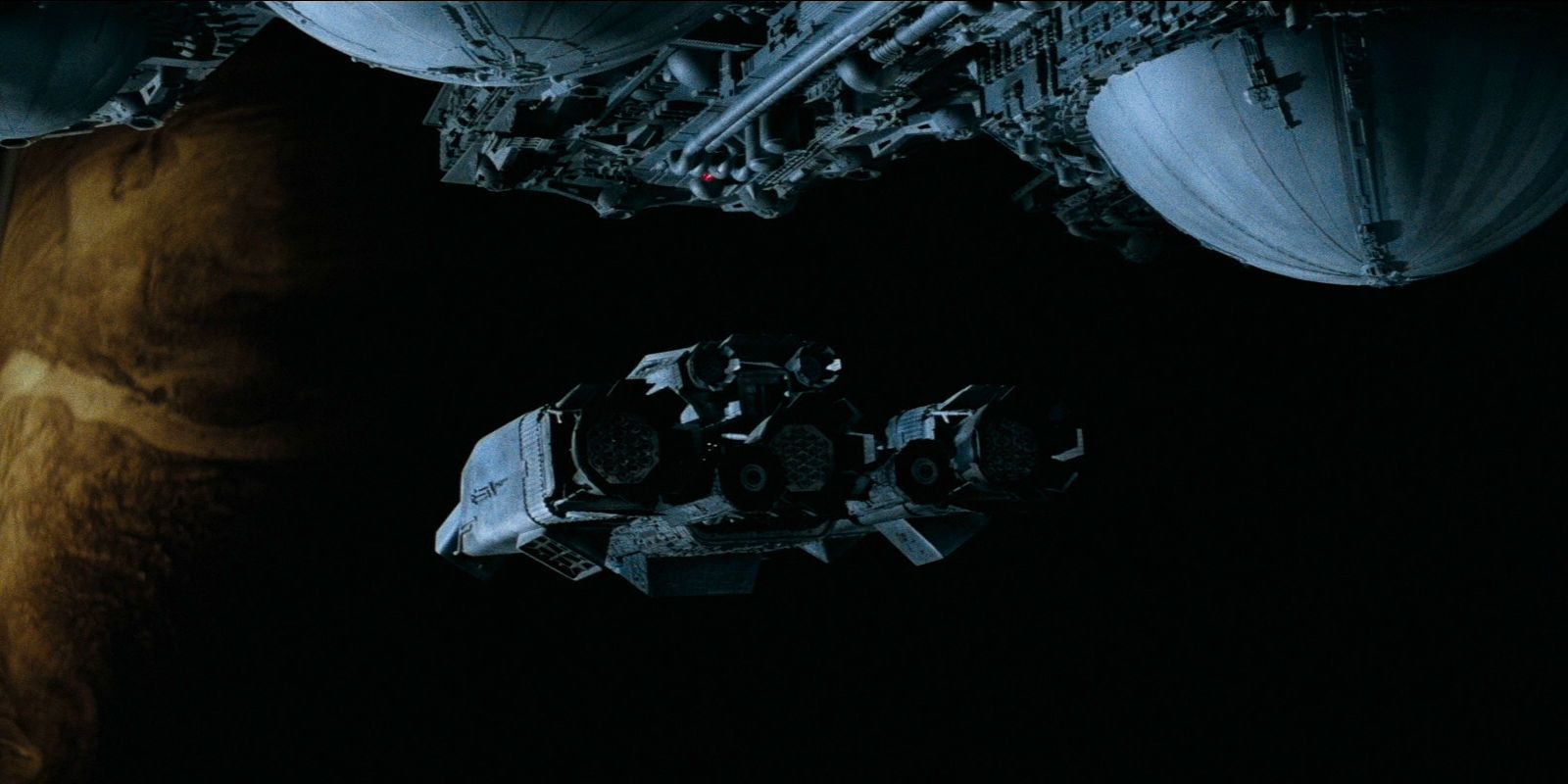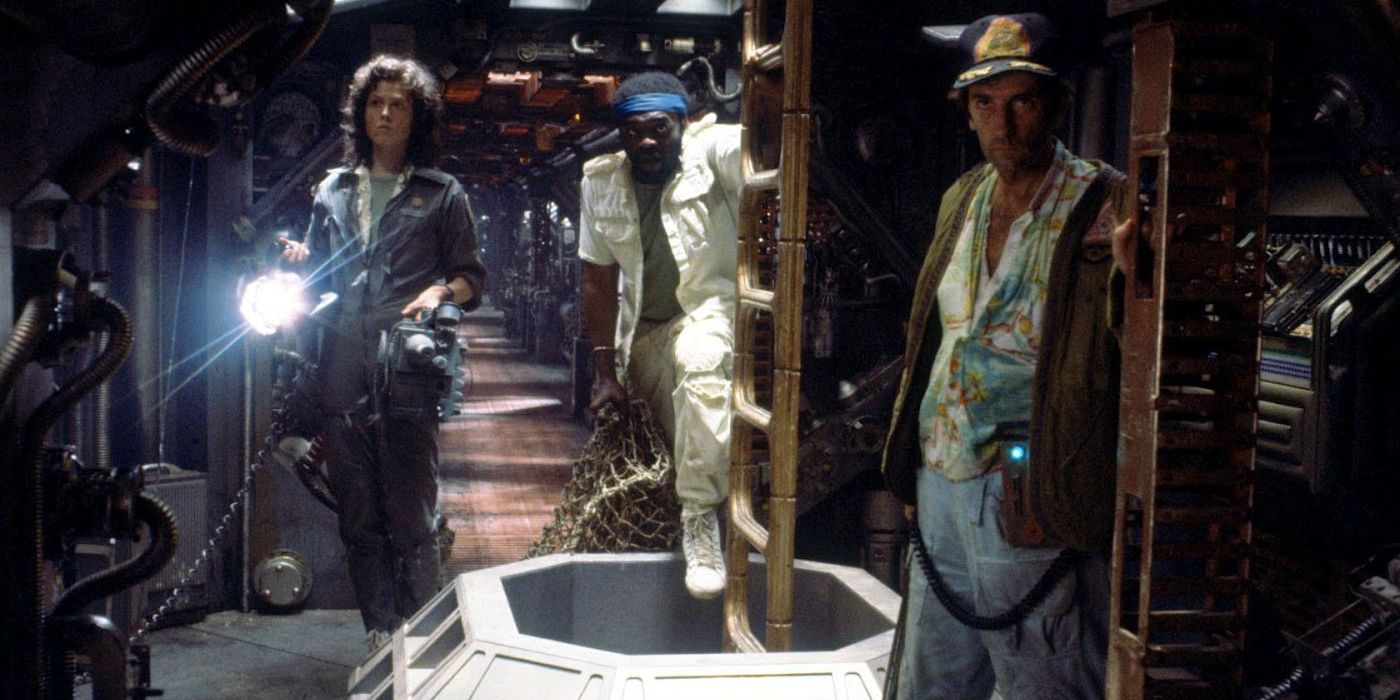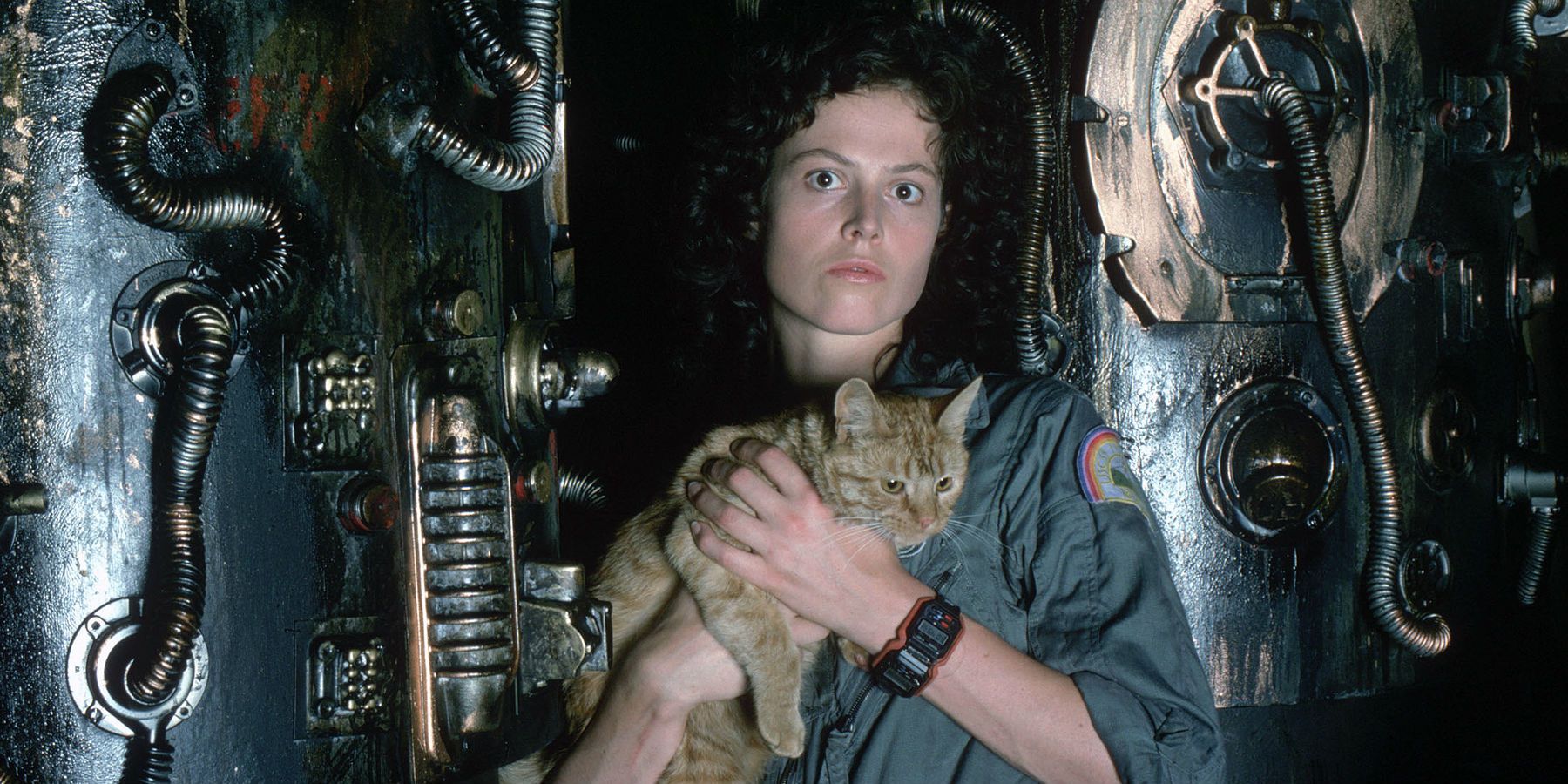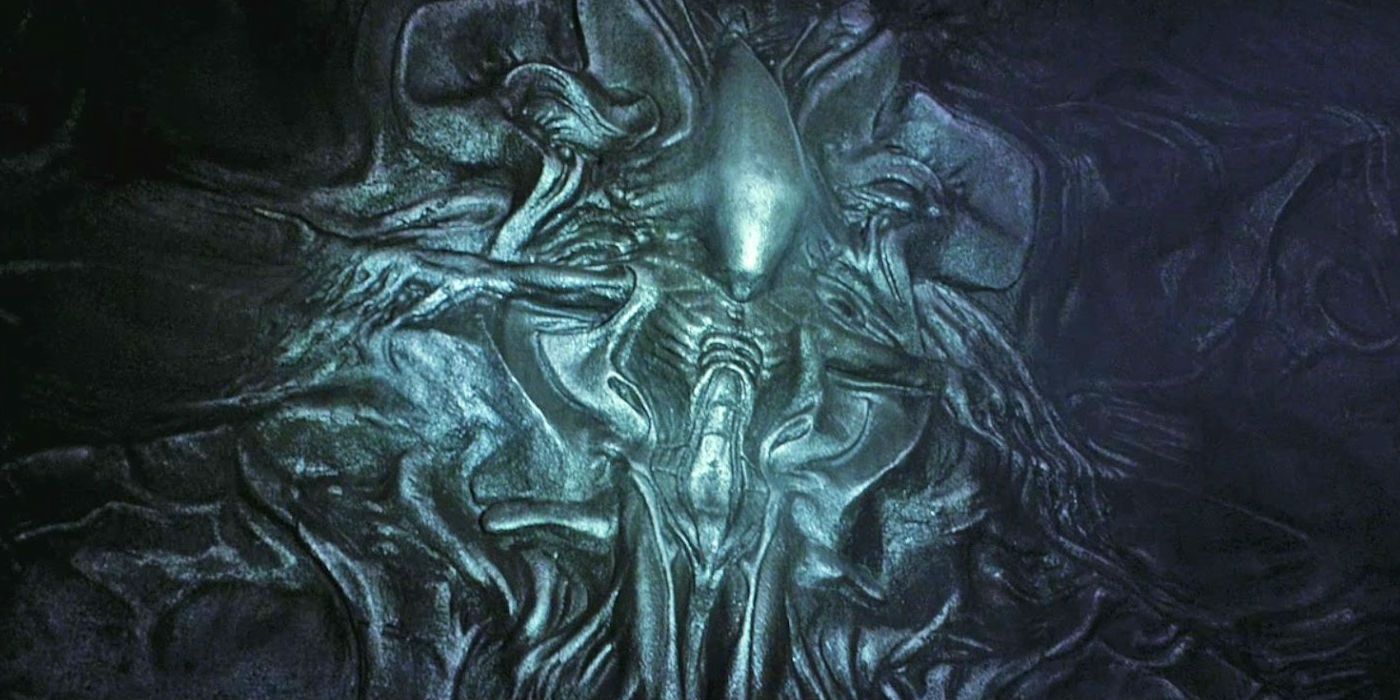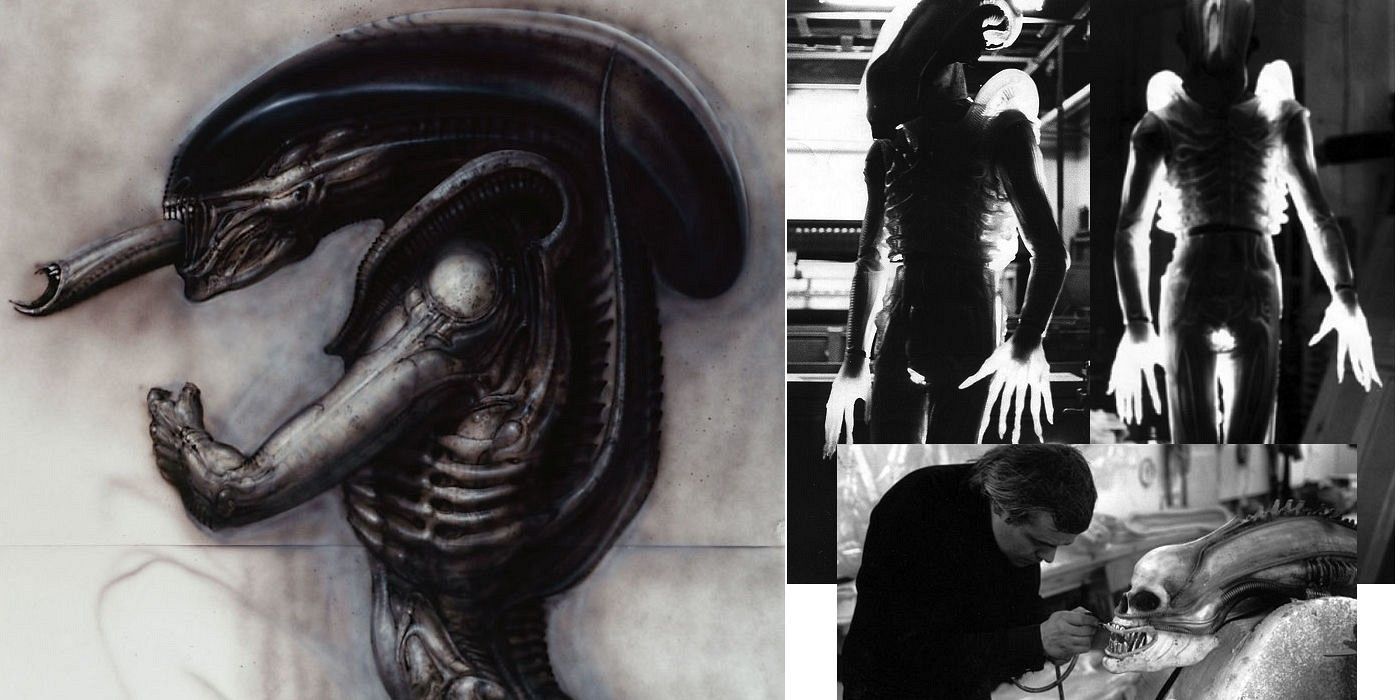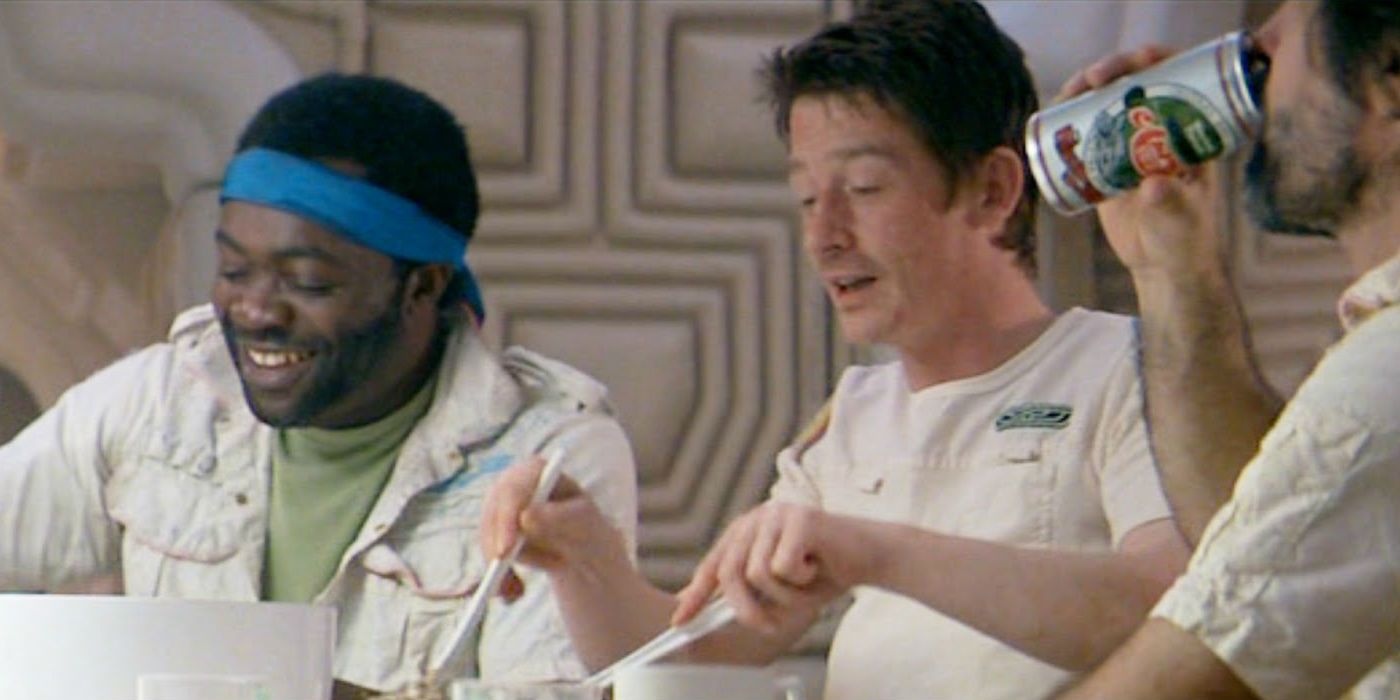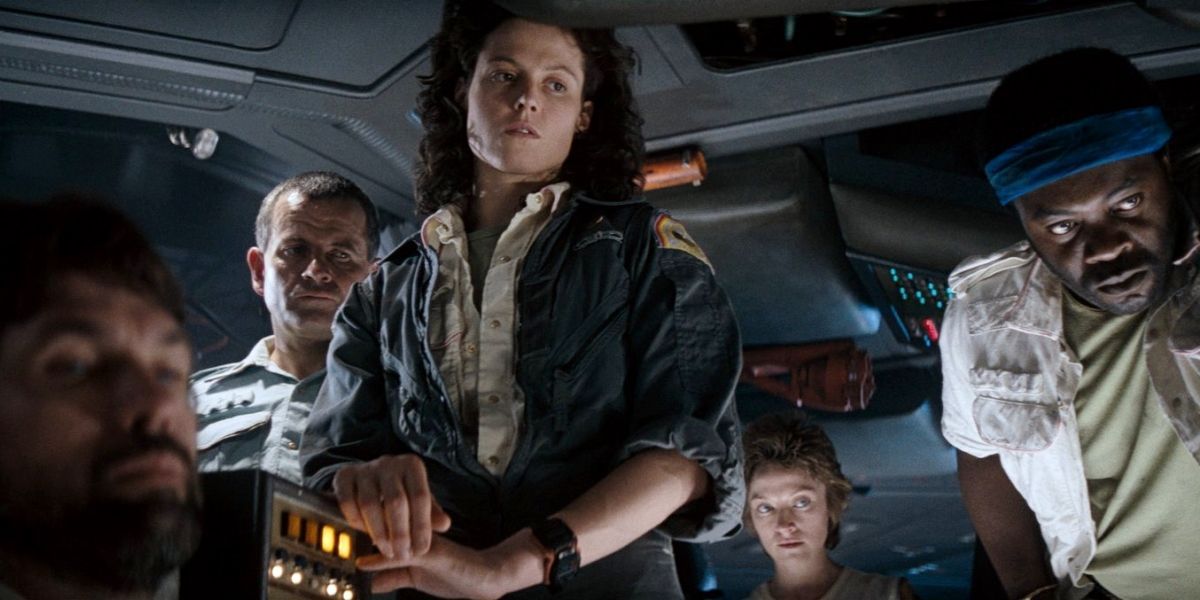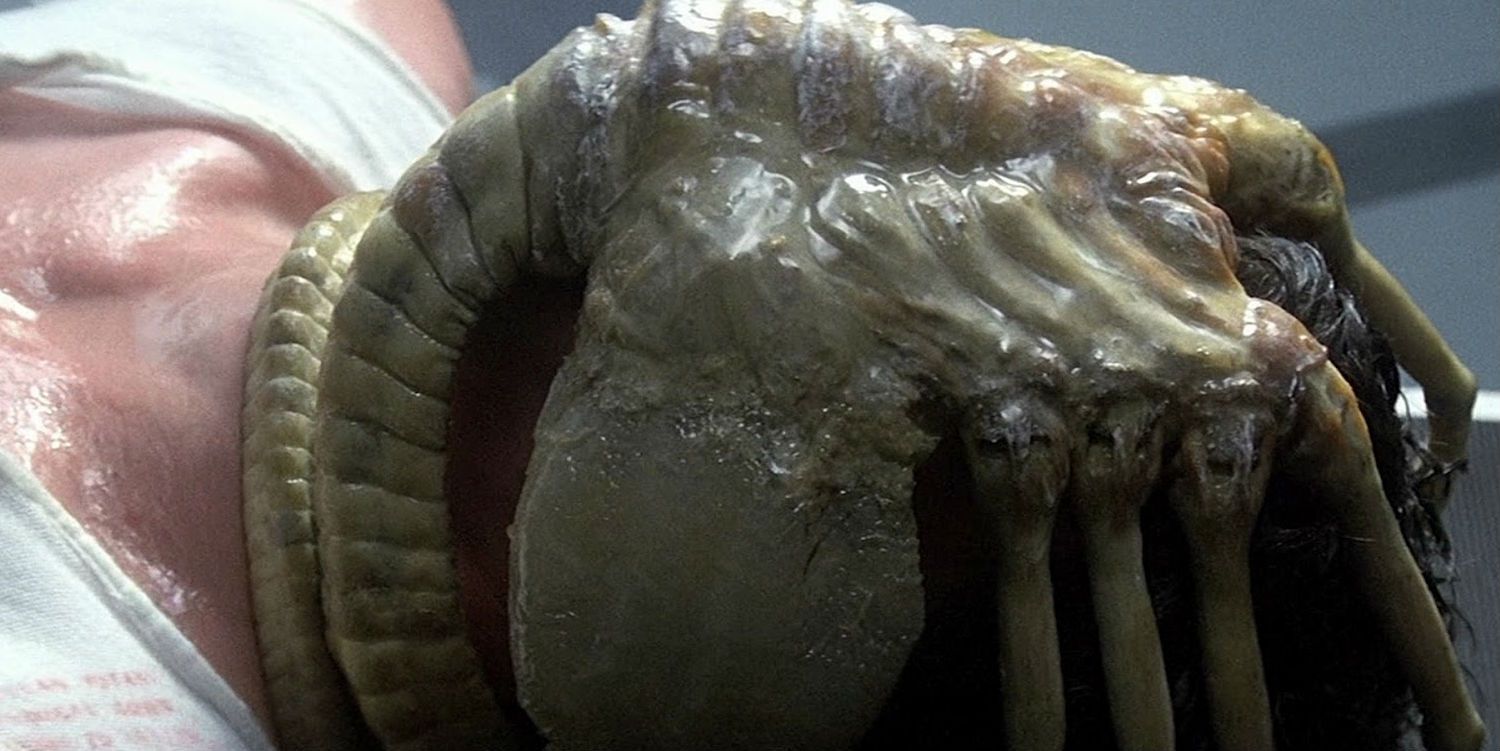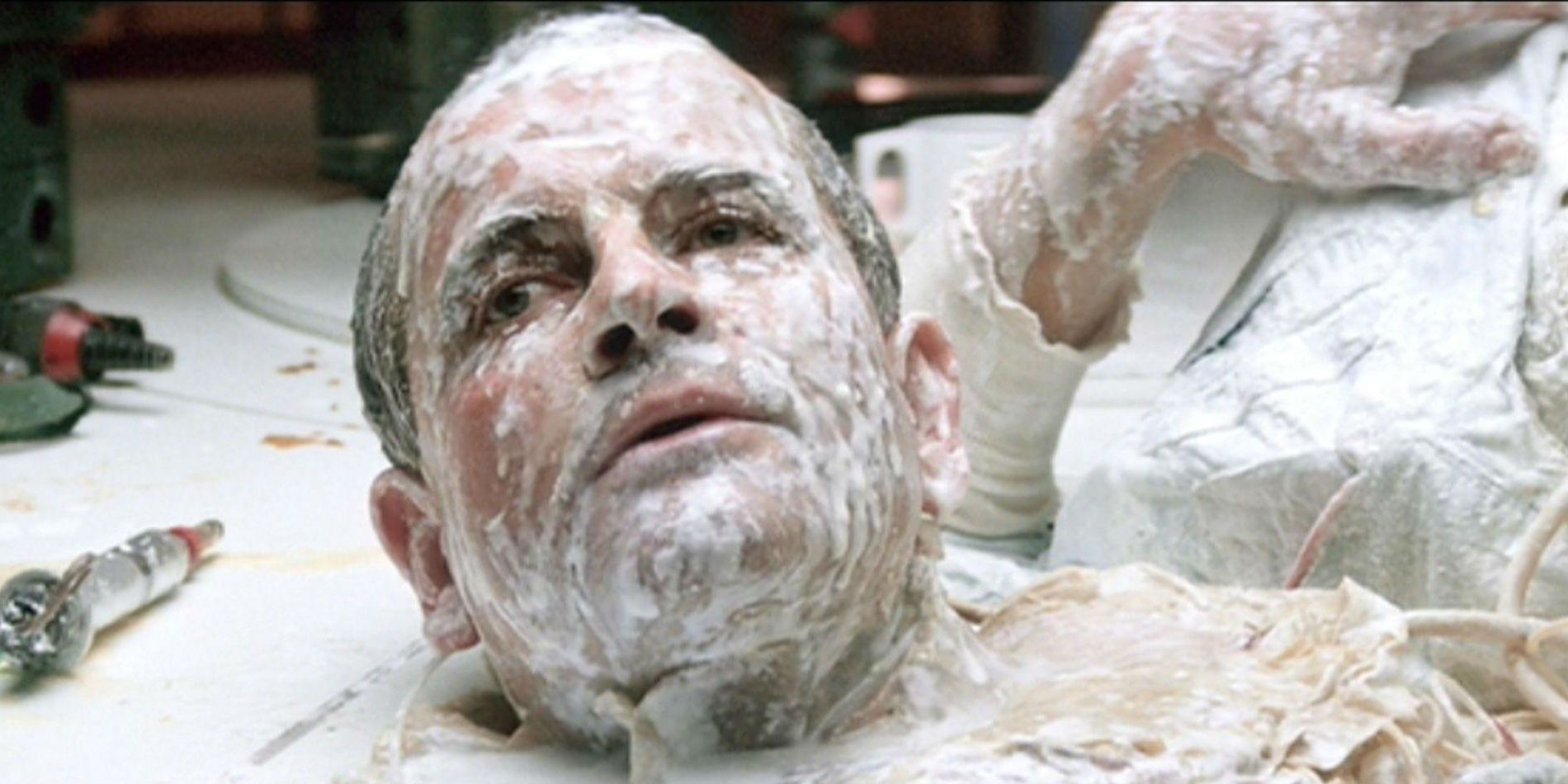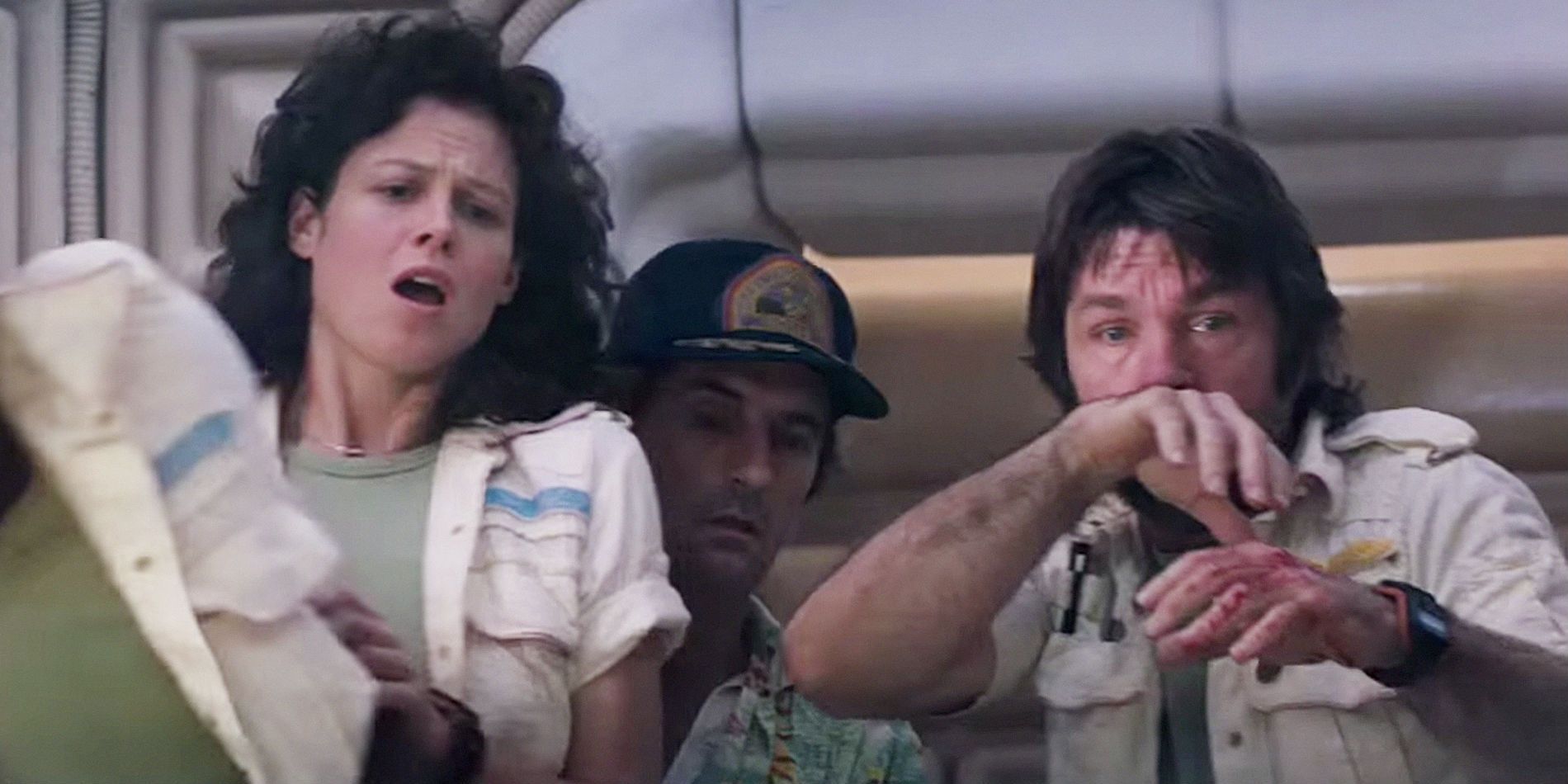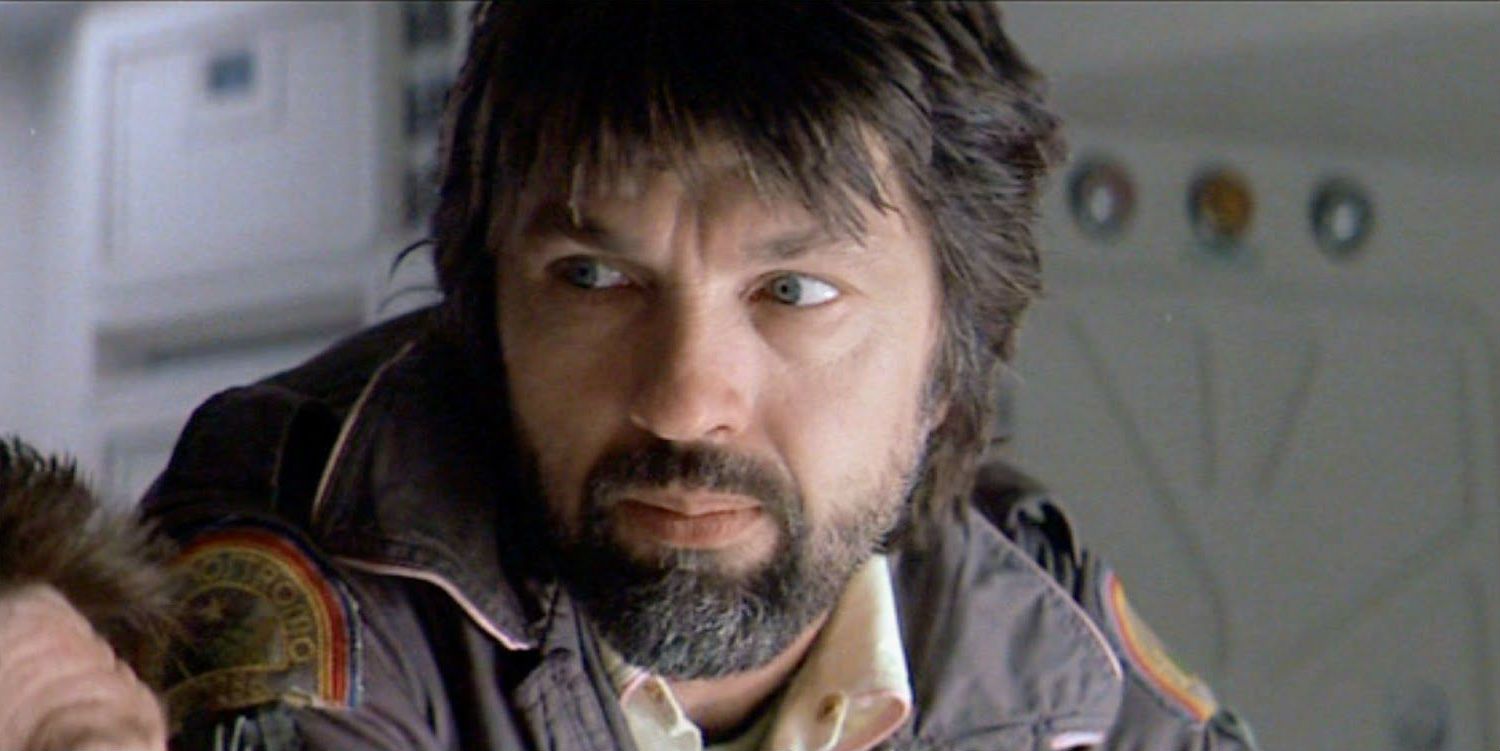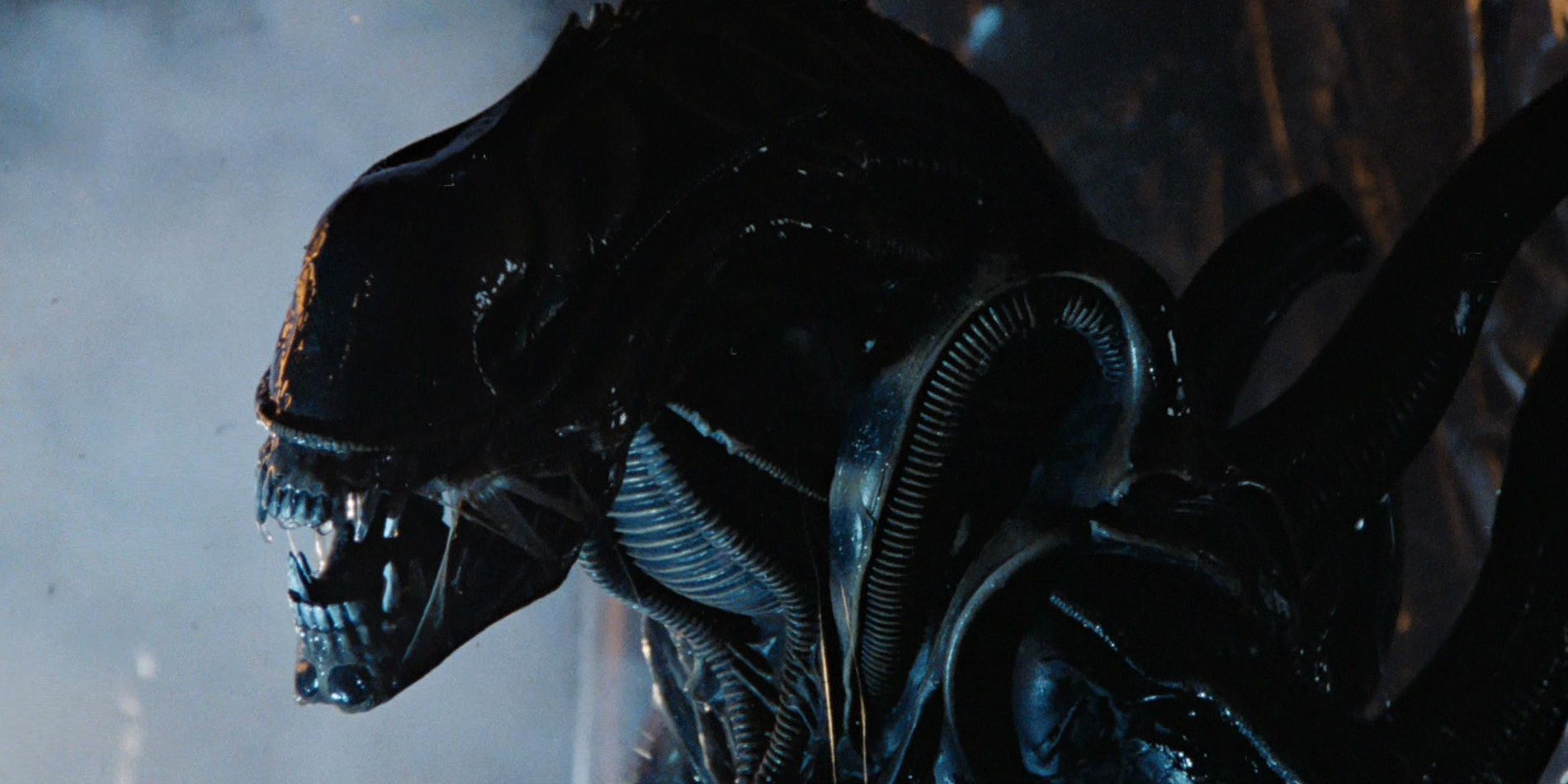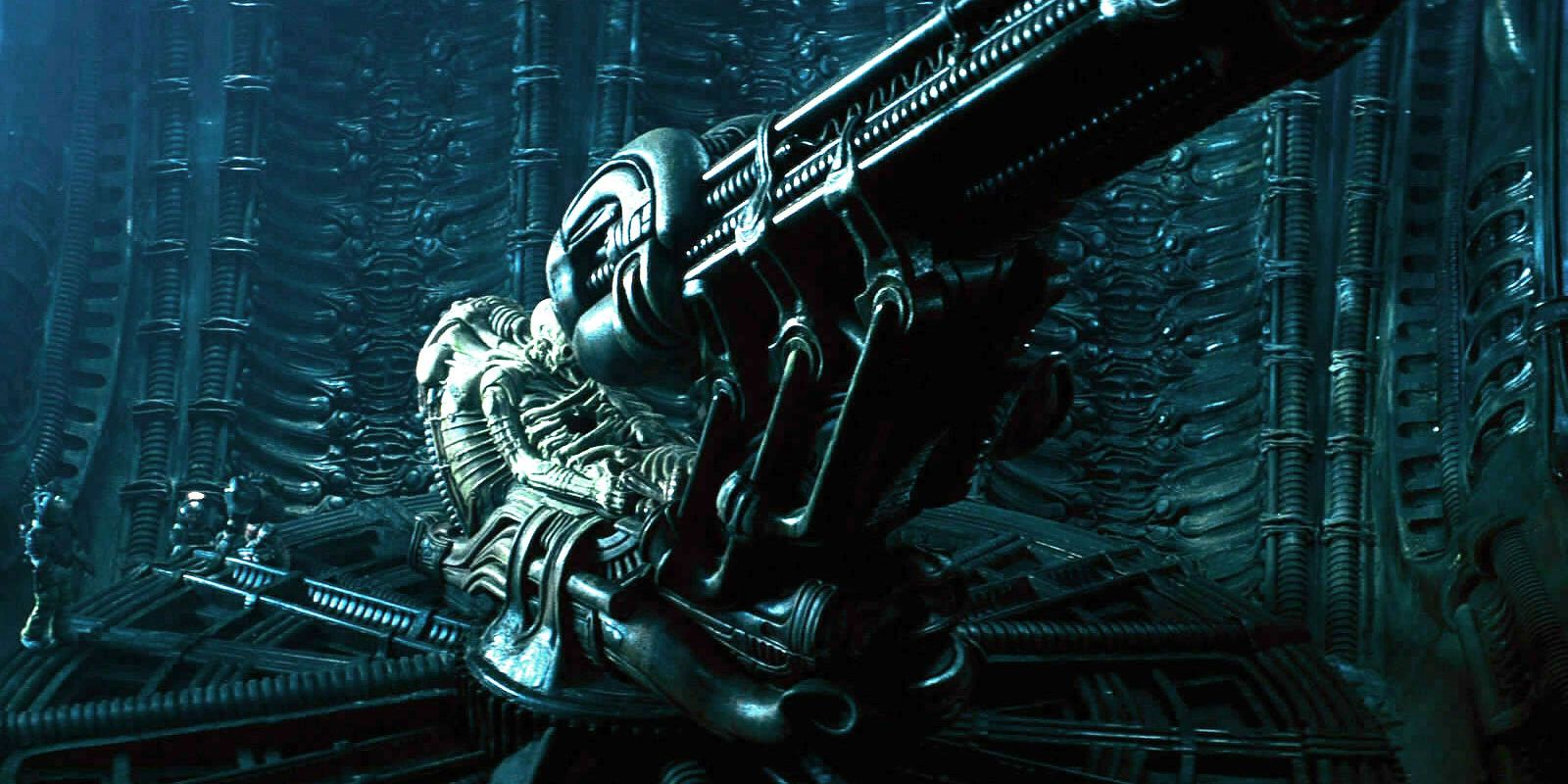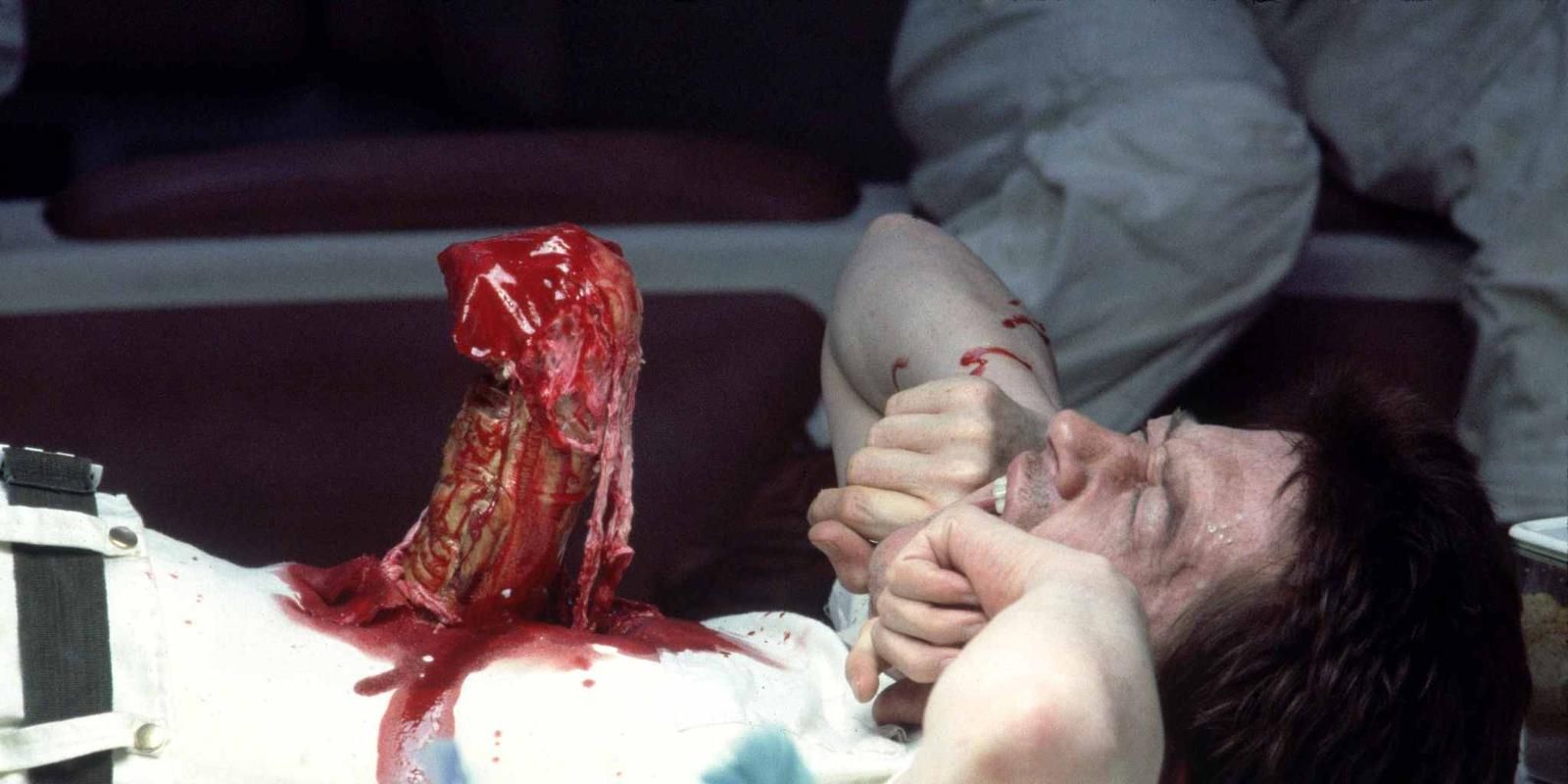Ridley Scott's 1979 sci-fi/horror epic Alien gave audiences something they'd never quite seen before. The film benefited from the release of Star Wars two years earlier. After the George Lucas fantasy became the biggest movie ever, science-fiction came back into vogue, and 20th Century Fox went looking for more pictures in the genre to greenlight.
What they didn't fully realize was that Scott wanted to make something very different from the feel-good fantasy America had fallen in love with. The director delivered a dread-filled picture featuring levels of gore that were virtually unprecedented for the time. Making the movie just as scary today is the way it exhibits patience. For nearly a full hour, you wait for something horrible to happen, and it doesn't. That builds up nerve-rattling tension. When the horror finally does kick in, it's even worse than you imagined. Rarely has a scary movie so expertly -- and effectively -- managed its tone.
Alien is a much-discussed classic, but as with almost all classics, there are tons of behind-the-scenes stories, many of which you likely haven't heard. We pay tribute to this brilliant chiller with a few of them.
Here are 15 Things You Didn't Know About Ridley Scott's Alien.
15. It was once called Starbeast
Screenwriter Dan O'Bannon was coming off a bad experience. He'd co-written and acted in Dark Star, the debut film from soon-to-be-famous Halloween director John Carpenter. Part sci-fi, part comedy, the movie was deeply cheesy, especially in the effects department, a fact O'Bannon loathed. He vowed to come up with something better, going on to conceive a horror film called Memory. It was about a spacecraft crew answering a distress call on a remote planet and featured an alien being that attaches to one member's face.
O'Bannon hit a wall, unsure of where to take the story from there. He proposed a collaboration with fellow writer Ron Shusett, who helped him figure out the plot's third act. They ended up retooling another screenplay that O'Bannon had written -- one about little gremlins attacking the crew of a B-17 bomber -- using its premise for the back end of their project. They also gave their script a new title: Starbeast. Eventually realizing that title was a little silly, the team settled on the more sleek and simple moniker it became known by.
14. It could have starred Meryl Streep and Harrison Ford
Sigourney Weaver is so associated with the character of Ripley that it's impossible to imagine anyone else inhabiting the role. Simply put, it made the then-unknown actress a star. The character was almost portrayed by someone else, though. During the casting process, it was narrowed down to Weaver and Meryl Streep, who was then hot off The Deer Hunter and Woody Allen's Manhattan. But Streep was also going through a personal tragedy: her boyfriend, actor John Cazale (Dog Day Afternoon), had recently died from cancer. The producers felt that it might be inappropriate to approach her about working at that point, especially in a dark horror movie where multiple characters die gruesomely, so they offered the part to Weaver.
Tom Skerritt, meanwhile, would not have had the chance to portray Dallas if Harrison Ford had said yes. Ford, presumably not wanting to do another outer space-set flick so soon after Star Wars, turned the role down. Of course, he did make another sci-fi picture with Ridley Scott a few years later: Blade Runner, a classic in its own right.
13. It was the studio chief's idea to make Ripley a woman
The screenplay O'Bannon and Shusett wrote was optioned and further developed by producers Walter Hill and David Giler. They conceived it as a story about "truck drivers in space," knowing that audiences would relate to the characters more if they seemed like average Joes who just happened to work in space. Fox studio head Alan Ladd came up with an interesting spin on that idea, suggesting that Ripley should be a woman, not a man. An average Jane, if you will.
Scott took to that idea, agreeing with Ladd's suggestion that it would distinguish Alien from other science-fiction stories, where the heroes were typically male. He also knew it allowed the movie to have a traditional woman-in-peril element, without needing a man to come in and save her. That was a radical concept for the 1970s. To further avoid gender stereotyping, they changed nothing else about the character in the script.
12. Giger's famous designs were almost used by another movie
One of the signature components of Alien's effectiveness is the design work by Swiss artist H.R. Giger. His distinct style of art, which he referred to as "biomechanical," combined both human and technological elements. For Ridley Scott's film, he designed the alien "xenomorph" as well as other assorted things the characters find on the distant planet. By every account, the film wouldn't be what it is without his substantial contributions. Nor would it be as provocative: Giger's designs were heavily influenced by genitalia.
Some of the artist's best ideas likely would not have been available had a previous cinematic project come to fruition. In fact, it's possible Giger wouldn't have been involved in Alien at all if audiences had been exposed to his work in an intended adaptation of Frank Herbert's Dune. Director Alejandro Jodorowsky hired Giger to do some design work for his film, knowing that most people had never seen the artist's disturbing creations. A series of financial problems caused the production to fall apart before completion, and Giger moved on to Alien, which benefited greatly from the impact of his dark, eerie work.
11. The original alien suit was translucent
It was clear to everyone that Giger's work was profoundly disturbing. The question became how to transfer it to the screen in a way that would scare viewers without thoroughly turning them off. Fox worried that if Alien was too unsettling, audiences would stay away. For this reason, they initially resisted Giger's participation. Scott and the producers insisted he was the best choice, and the studio eventually deferred to their judgement.
Still, there was the matter of how to bring the xenomorph to life. It was originally conceived to have translucent skin, so that you could see its insides doing their thing. While that idea was intriguing, Scott disliked how the costume looked when it was actually made. He came up with the idea of making the creature black, to allow it to blend into the shadows more easily and therefore become even scarier. Giger, meanwhile, suggested that it would be seriously freaky if the xenomorph had no eyes.
A translucent alien remains cool in concept, but there's no denying that what we actually got was perfect.
10. The original Kane was replaced
One of the key ideas inherent in Alien's DNA was that the Nostromo crew should be diverse because, in this imagined future, corporations are in control and therefore can pull the best and brightest from anywhere. Scott followed through on this idea by employing a cast that included men and women, Caucasians and an African-American, and both Americans and Brits.
For the role of Kane, the director cast Jon Finch, an actor known for Hitchcock's Frenzy, among other things. His time on the film was short. During the first day of shooting, Finch, a diabetic, collapsed on the bridge set after suffering a bronchial attack. He had to be carried off. With the actor unable to continue filming, Scott reverted to his first choice for the role, John Hurt, who had previously been unable to participate due to a commitment to another film. With that project dissipated, he was free to take on what would become one of his most famous characters.
9. Two of the actors clashed with the director
By all accounts, Alien was a difficult shoot (much like its sequel). The Nostromo sets were claustrophobic. Keeping the film on budget was a constant struggle. And Scott, knowing he had the makings of something truly special if he didn't screw it up, was vigilant about getting everything, particularly the ominous tone, just right. Although they understood the reasoning behind it all, the actors sometimes became impatient with the process.
Tom Skerritt was repeatedly frustrated with the length of time Scott took setting up and executing the very precise shots that he wanted. He was known to openly express that displeasure. A performer who prizes concentration, he apparently felt that the long wait times were sapping his focus and possibly diminishing his work. (In fairness, he has since said in interviews that the experience was worth it.) Yaphet Kotto, who plays Parker, was even more obstreperous. He liked to improvise, which created a challenge on such a tightly-constructed story, and bombarded the director with ideas that were not always feasible. Worst of all, it has been alleged that he initially refused to die on the day of his character's death scene.
8. The facehugger shot was filmed upside down
There are several iconic moments in Alien, and one of them is a scene in which Kane and other crew members stumble upon a lair of alien eggs. After an especially large egg unfurls its top flaps, Kane bends over to take a look at whatever is inside. Some kind of multi-limbed creature, which has since come to be known as a "face-hugger," violently springs out jack-in-the-box style, burning through his mask with its acid and sucking itself tight to his face. Even if you've seen the movie a dozen times and know it's coming, the masterful staging of that scene makes you jump.
To achieve it, Scott used some creative techniques. The camera was placed upside down, creating an effect where you can see the slime that covers the egg's exterior dripping up, almost subliminally adding to the terror. The director donned a pair of gloves to personally create the movement of the creature right before it strikes. To top it all off, compressed air cannons fired pig intestines, just to give it all a palpably repulsive look. Tightly edited together, these elements appear seamless.
7. Ash's demise utilized a weird mixture of ingredients
Another iconic moment involves the character of Ash, played by Ian Holm. Unbeknownst to the Nostromo crew, he is an android, sent by the Weyland-Yutani Corporation to bring back the xenomorph. The crew members, it turns out, are mere pawns, and everyone discovers his true nature during a tense moment. Ash tries to choke Ripley after she confronts him about this fact, so Parker knocks his head off, leaving a disgusting mess.
Scott knew the impact of this moment would be greater if he could create a concoction that was somehow simultaneously familiar and foreign, yet hard to pinpoint. To achieve that end, he used a variety of substances, specifically a mixture of pasta, caviar, milk, and marbles. That's right, marbles. This combination looked appropriately gross on camera.
Holm stuck his head through a specially-designed table and everything, including his face, was covered with the mess. It was an unfortunate situation for the actor, as he reportedly detested the taste of milk.
6. The actors were not prepared for the chest-burster
Without a doubt, the single most famous scene in Alien involves the demise of Kane. The face-hugger has somehow implanted its seed into his stomach. This revelation comes when he abruptly begins having pain during mealtime. The other crew members place his convulsing body upon the table. To their horror, a small, slimy creature bursts through his chest, spewing blood everywhere.
If the actors appear to be doing an especially authentic job of looking repulsed, there's a good reason: they didn't know exactly how gruesomely Scott planned to craft the scene. Everyone was aware that some kind of small creature was going to burst through Kane's chest. The director, wanting to get reactions that were as real as possible, secretly loaded John Hurt up with an unreasonable number of "blood bags" that would blow when the creature emerged. He also arranged for cow and pig intestines to be shipped in and used in the shot. The effect was phenomenal. Veronica Cartwright, who plays Lambert, ended up getting nailed in the face with some of the fake blood, making her horrified reaction the most real of them all.
5. A deleted scene showed the fate of Dallas
It was shocking when Dallas bit the dust. In 1979, having the male lead succumb to the monster in a picture of this sort was practically unheard of. (Actually, that sort of thing is rare today, too.) In the movie, the creature nabs Dallas while he's in the process of trying to lure it into the main airlock and blast it into space. That's the last we see of him.
There was a little more to the story, though. In a scene ultimately deleted from Alien, Ripley makes her way through the ship's hold, where she finds the body of Dallas encased in a cocoon. Scott cut the scene for pacing reasons; he felt that Ripley's scramble to survive was the driving element in the story at that point, and stopping to reveal what happened to Dallas (no matter how horrifying) slowed things down when they needed to continually ramp up. For a special theatrical re-release of the movie in 2003, 20th Century Fox persuaded Scott to reinstate the scene, even though he has long insisted he prefers Alien without it.
4. A Kenyan student played the alien
It was obvious to all that the alien itself would have to be played by a man in a suit. There was, at the time, no other way to convincingly pull the character off. Scott worried about the effect looking too fake, like those old Godzilla movies where you can see the rubber of the costume bending. A variety of tricks were employed to get around this, including strategic use of light and shadow, as well as frequently shooting the alien from the side.
As for the person inside that costume, the production hired Bolaji Badejo, a native of Kenya who was in London to study graphic design. Badejo, who stood six feet ten inches tall, was discovered by a casting director in a bar. They needed someone tall who could move in interesting or unusual ways. Badejo, it turned out, had studied both mime and Tai Chi. He worked to create a signature gait for the creature. Alien marks the only film role for Badejo, who died of sickle cell anemia in 1992. Still, the impression he made will endure for as long as movies exist.
3. Composer Jerry Goldsmith felt betrayed
Jerry Goldsmith is widely considered to be one of the greatest film composers ever. When he signed on to write the score for Alien, he'd already earned acclaim for his work on movies such as Star Trek: The Motion Picture, The Omen, and Chinatown. He delivered his score, which Ridley Scott promptly rejected as too traditional for a story intended to scare the living hell out of audiences. A frustrated Goldsmith went back to the drawing board, writing the weirdest music he could conceive, almost as an act of defiance. To his dismay, Scott and the producers loved the new direction.
That wasn't the only source of contention. Despite having composed very specific music cues, Scott retained a temp track he'd used during editing of one scene. Ironically, it was something Goldsmith composed for an entirely different film. Other cues were shortened or moved from the scenes for which they were intended. Similarly, the end credits featured a previously-existing composition from another composer, thereby denying Goldsmith the chance to provide the music audiences would catch their breath to as they exited the theater. Needless to say, the maestro felt his work was being disrespected.
2. Test audiences vomited and fainted
To a degree, part of Alien's appeal is that it's an endurance test. The face-hugger, Ash's beheading, and especially the chest-burster -- they all have a shocking, visceral impact. That was especially true in 1979. Such creative and explicit gore had rarely, if ever, been shown in a major studio release. Audiences were used to fun sci-fi, like Star Wars, or cheesy sci-fi. They definitely weren't prepared to see a creature literally pop out of a man's chest.
During a test screening for the film, chaos ensued. According to accounts from the filmmakers, people fled the theater about an hour in -- right around the time of the face-hugger -- pushing past Scott, who stood in the lobby. They scrambled to get seats in the back, so as to be further away from the screen. There was screaming and horrified gasping. Audience members were seen vomiting in the restrooms. A theater employee is said to have fainted after witnessing Ash's head being knocked off. Another viewer supposedly fell and broke an arm in an effort to flee the auditorium. It was clear to Scott and the producers that their movie hit exactly the chord it was intended to.
1. It opened to $3.1 million
Alien debuted on May 25, 1979. In its opening weekend, it topped the box office with $3.5 million. These days, movies can open to $100 million -- or, in some cases, even $200 million -- so that number seems amazingly low. Of course, ticket prices were much cheaper back then. What makes the number impressive is that it came from just 91 theaters. The film's per-screen average was a whopping $38,767. In other words, it wasn't in many cinemas, but it repeatedly sold out the ones that were showing it. In comparison, the weekend's other new movie, the Peter Sellers comedy The Prisoner of Zenda, opened in second place with $2.4 million from 417 screens.
From there, Alien continued its streak as the must-see movie in America, expanding into more theaters, reaching its peak of 757 in early July. It performed well all summer long, earning repeat business and drawing groups of people seeing it together. The movie ended its run in early October, amassing a grand total of $60 million. Adjusted for inflation, that would amount to $272 million today.
---
What is your favorite part of Alien? How did you react the first time you saw it? Tell us your experience in the comments.

